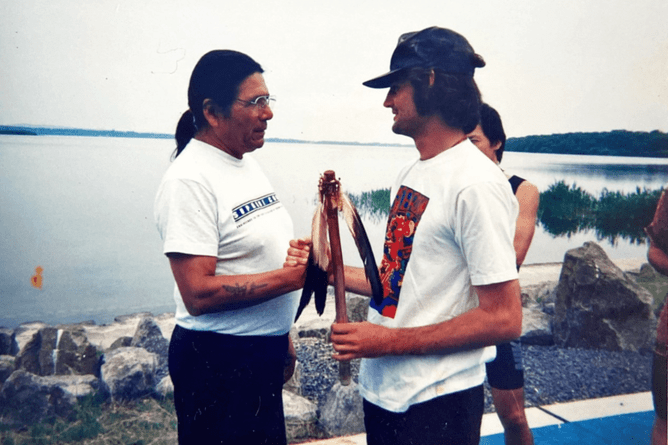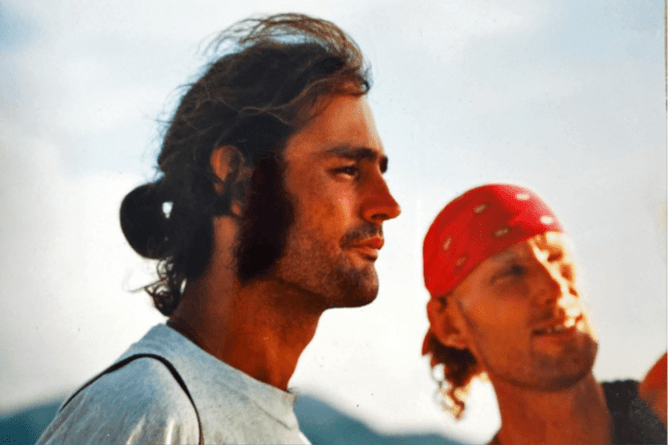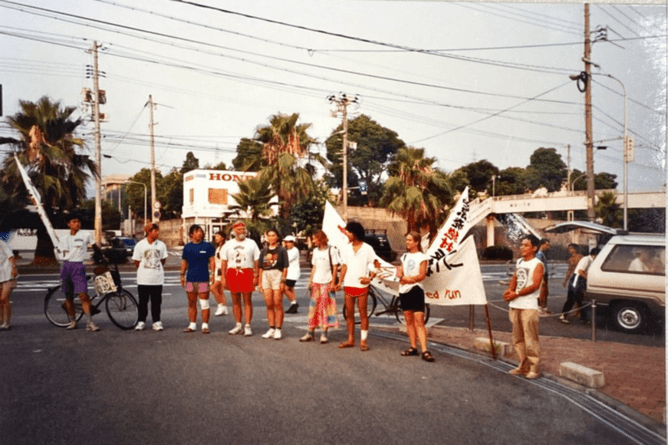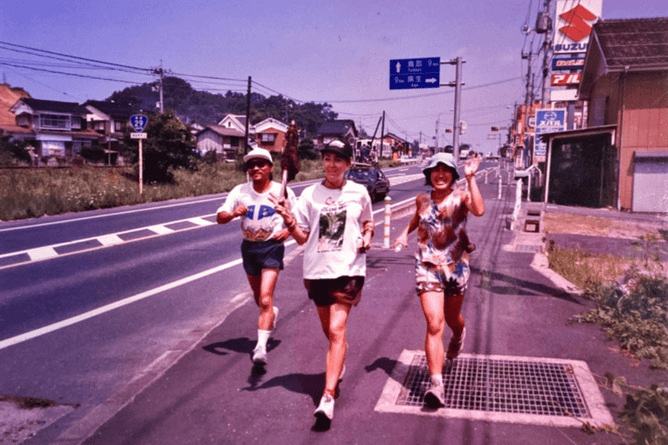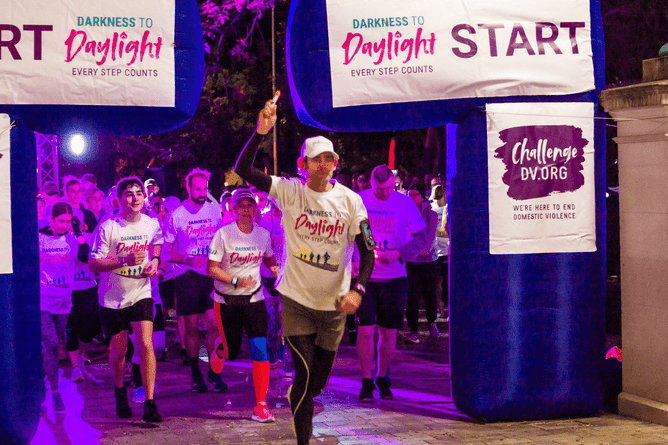In 1995 I took part in the American Indian Movement’s Sacred Run in Japan with an amazing group of people from many corners of the world. The Run followed the tradition of carrying a message on foot from village to village. The Run’s message was ‘All Life Is Sacred’ and it was carried in a staff of willow with eagle feathers down the west coast of Japan over two months arriving in Hiroshima and then Nagasaki on the 50th anniversaries of the dropping of the atomic bombs.
I was very nervous going into the Run. I wasn’t sure how far or fast I’d be able to go, and I was worried about what people would think of me. Over the course of the Run though I realised that none of that was important. It wasn’t about me. It wasn’t a competition. It was about us collectively running with the message. The only competition was within each runner. We all wanted to challenge ourselves to keep going every day because we were running for a reason.
Each running day would start with a circle gathering where there would be a drumming and saging ceremony and we would hear about the ‘running day’ – where we would be going, how far and any important events. A ‘lead runner’ would then be given the staff and head off – often with a few others behind. The rest of the group would pile into support cars and head off down the road. Any person at any time could get out and run a distance elected by them. The only rule was that the staff always be in the lead and never stop moving until the end of the day. If the runner carrying it wanted to stop they would pass the staff on to someone else. At the end of the day, we would welcome the staff into whatever camping ground or temple we were staying at that night and gather again in a circle to end the ‘running day’. So, each runner could elect to cover whatever distance worked for them each day. It didn’t matter how far each person ran – as long as the message kept moving.
I have a memory of when it was really brought home to me that this Run was way bigger than ‘how far or how fast I could run’. I recall it was a really hot day and I was with a couple of other runners at the base of a steep hill. We were complaining a bit about having to run up that hill in this heat. An Elder overheard us and, quite rightly, put us in our place. He reminded us that we were running about Hiroshima and Nagasaki, and the intensity of the heat caused when the bombs were dropped. Us running up that hill was nothing compared to that. We did it. And never complained again.
I often run now with a message in mind – a prayer for someone I know who is doing it tough. I can think of many times where I have physically come to a standstill, exhausted, but got going again by remembering who I was running for and how tough they were doing it in comparison.
The Darkness to Daylight challenge provides an opportunity for people to challenge themselves to raise awareness about the impact of domestic and family violence in a physical and symbolic way. Some may cover the whole distance of 110km, others may run/walk through the night and see how far they get, others may get up in the middle of the night to do their part of a team relay, others may take part in the 10km run or 3km walk in the morning. Whatever they are physically and mentally prepared for and capable of doing. As with the Sacred Run, the important thing is that the message keeps moving – the message, carried in candles, that domestic and family violence is not okay. The important thing is not how far each person runs but that each person remembers why we are running.
Article originally published April 10, 2018
